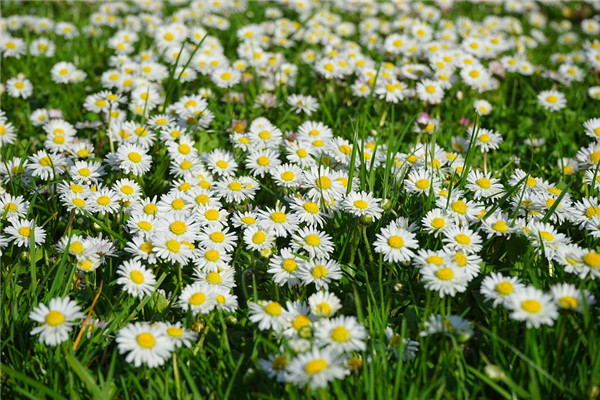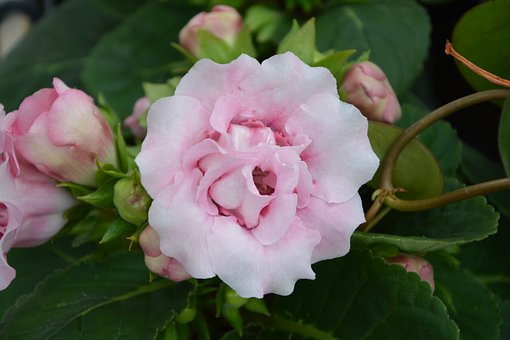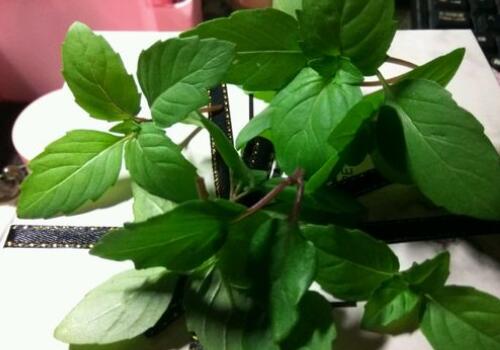How much is the perennial herb chrysanthemum seed per jin? How do you plant it? How long will it blossom?
Chrysanthemum, also known as Huang Hua, Jin Ying, Tao Ju, etc., is a common perennial herb in China. It is cultivated because of its high ornamental and medicinal value. How much is the chrysanthemum seed? How do you plant it? How long will it blossom?

Seed price:
The price of chrysanthemum seeds is about 40-50 yuan per jin. However, there will be great differences in prices due to differences in seed quality, varieties and regional consumption, and the local market price shall prevail.
How do you plant it?
1. Soil selection: when sowing chrysanthemum, loose soil rich in organic matter should be selected, and a certain amount of mature organic fertilizer should be applied as base fertilizer before sowing.
2. Sowing method: when sowing chrysanthemums, mix the seeds and a certain amount of sand evenly, and spread them evenly on the seedling bed, then cover the soil for about one centimeter.
3. Post-sowing management: chrysanthemum should maintain soil moisture after sowing, the temperature should be controlled at about 18 ℃ to germinate, and the temperature, air humidity and sunshine should be sufficient.
4. timely transplanting: when the chrysanthemum seedlings grow 4 to 5 true leaves, the chrysanthemum seedlings can be transplanted into the nutrition bowl and removed from the heart, and there is no need to apply topdressing during the seedling growth period, so as not to cause excessive growth of branches and leaves and affect flowering.
How long can the plant blossom?
Most chrysanthemums open in September, but the opening hours vary from big to small due to environment and variety. Summer chrysanthemum blossoms in May and June, autumn chrysanthemum in September, evening chrysanthemum in October to November, cold chrysanthemum in December in January, wild chrysanthemum in June to November, chamomile in May, and small red chrysanthemum in July to October. Of course, after the adjustment of artificial light and other factors, the florescence will also change.
The florescence of chrysanthemum is usually from September to November. There are many kinds of chrysanthemum, the planting area is very extensive, there is no certain time to blossom, but most of them are in autumn, but there are also chrysanthemums blooming in summer and winter. Under normal natural conditions, it can be divided into summer chrysanthemum (May-September flowering), autumn chrysanthemum (October-November flowering), cold chrysanthemum (December-January flowering), generally lasting about 20-35 days. However, after being cultivated by horticulturists and changing the sunshine conditions, there are also May chrysanthemums that bloom in May, July chrysanthemums that bloom in July, and August chrysanthemums that bloom in August.
Cultivation techniques:
1. Potted soil: fertile sandy soil should be selected for chrysanthemum cultivation, with a small basin first and then a large basin. After changing the basin for 2 or 3 times, the basin can be fixed in July. 6 parts of rotten leaf soil, 3 parts of sand and 1 part of cake fertilizer residue can be used to prepare mixed soil. After watering thoroughly, put it in a cool place, wait for the plant to grow normally and move to the sunny place.
2. Watering: chrysanthemum seedlings are young in spring, watering should be less. When the chrysanthemum seedlings grow up in summer, they can be watered once in the morning and again in the evening, and spray water on the branches and leaves of chrysanthemum and the surrounding ground with a sprinkler to increase the humidity of the environment. Before the Beginning of Autumn, it is necessary to properly control water and fertilizer to prevent the plant from growing too high. The Beginning of Autumn should increase the amount of water and begin to apply fertilizer before flowering, and the fertilizer and water will gradually thicken. In winter, flower branches basically stop growing, plant water consumption is significantly reduced, evaporation is also small, watering must be strictly controlled.
3. Fertilization: when planting chrysanthemum plants, sufficient base fertilizer should be applied in the basin. In the future, nitrogen fertilizer can be applied every 10 days. The Beginning of Autumn can apply slightly thicker fertilizer and water once a week from chrysanthemum budding to budding, and then suspend fertilization after applying thick fertilizer and water once more. If the chrysanthemum can be given calcium superphosphate or 0.1% potassium dihydrogen phosphate solution at this time, the flowers can bloom more brightly.
4. Heart picking: when the chrysanthemum plant grows to more than 10 centimeters high, it begins to pick the heart. Only 4-5 leaves were left at the base of the plant during coring, and all the upper leaves were removed. When 5 or 6 new leaves are grown, the heart is removed so that the plant retains 4 or 7 main branches, and the branches and buds that grow later should be removed in time. Coring can make the plant branching and effectively control the plant height and plant type. When picking the heart for the last time, the chrysanthemum plant should be stereotyped and pruned, too many branches, too strong and too weak branches should be removed, and 3-5 branches should be retained.
5. Bud thinning: when the chrysanthemum buds appear in September, the buds at the lower end of the plant should be removed, leaving only one bud at the top of each branch.
Time: 2019-04-09 Click:
- Prev

How much is a bag of paulownia seeds? How do you plant it? When will it blossom after planting? How to cut off the head after blooming? (with culture
Paulownia, also known as Liuxueni, snow mud, is a common perennial herb of the genus Tripterygium in China. It is deeply loved by flower friends because of its rich and beautiful colors and beautiful flowers.
- Next

What is the difference between perennial basil and Schizonepeta tenuifolia? What is the efficacy? How to grow potted plants? How to apply fertilizer?
Basil is a fragrant plant for both medicine and food, which tastes like fennel, also known as nine-story pagoda, Jinbu, St. Joseph grass, sweet basil, orchid incense, like warm and humid climate. What's the difference between basil and Schizonepeta tenuifolia? What is the efficacy? How to grow potted plants? How to apply fertilizer? According to the data of Labiatology, basil has the character of dispelling wind and good spirits.
Related
- Fuxing push coffee new agricultural production and marketing class: lack of small-scale processing plants
- Jujube rice field leisure farm deep ploughing Yilan for five years to create a space for organic food and play
- Nongyu Farm-A trial of organic papaya for brave women with advanced technology
- Four points for attention in the prevention and control of diseases and insect pests of edible fungi
- How to add nutrient solution to Edible Fungi
- Is there any good way to control edible fungus mites?
- Open Inoculation Technology of Edible Fungi
- Is there any clever way to use fertilizer for edible fungus in winter?
- What agents are used to kill the pathogens of edible fungi in the mushroom shed?
- Rapid drying of Edible Fungi

